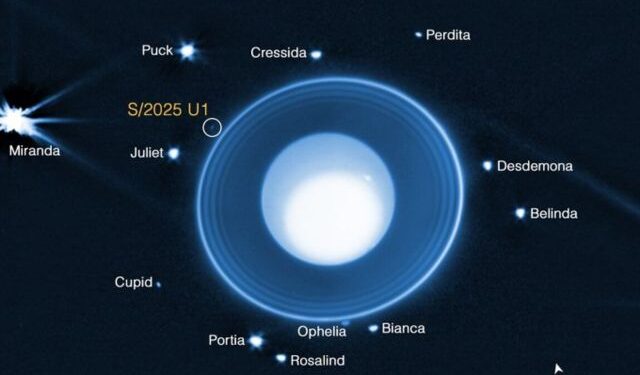NASA’s James Webb Space Telescope has identified a previously unknown moon orbiting Uranus, expanding the planet’s confirmed lunar tally to 29.
Designated S/2025 U1, the moon is estimated to be just 10 kilometres wide and orbits approximately 56,000 kilometres from Uranus’ centre.
This discovery marks a significant leap in our understanding of the outer Solar System, especially considering the moon’s faint visibility, which eluded even the Voyager-2 spacecraft during its 1986 flyby. Scientists believe the moon’s nearly circular orbit suggests it may have formed close to its current location, nestled between the orbits of Ophelia and Bianca.
“This moon is smaller and fainter than any previously known inner moon of Uranus,” said Matthew Tiscareno of the SETI Institute, hinting at the possibility of more hidden celestial bodies yet to be discovered.
The moon is currently unnamed, pending approval from the International Astronomical Union (IAU), which traditionally names Uranian moons after Shakespearean characters. The discovery was made under Webb’s General Observer program, utilising its NIRCam instrument, known for detecting faint, distant objects with high infrared sensitivity.
As scientists continue to unravel the mysteries of Uranus’ chaotic ring and moon system, this latest find underscores the telescope’s transformative role in deep-space exploration.





























